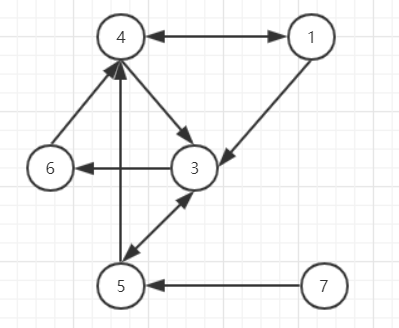题目
Weibo is known as the Chinese version of Twitter. One user on Weibo may have many followers, and may follow many other users as well. Hence a social network is formed with followers relations. When a user makes a post on Weibo, all his/her followers can view and forward his/her post, which can then be forwarded again by their followers. Now given a social network, you are supposed to calculate the maximum potential amount of forwards for any specific user, assuming that only L levels of indirect followers are counted.
Input Specification:
Each input file contains one test case. For each case, the first line contains 2 positive integers: N (<=1000), the number of users; and L (<=6), the number of levels of indirect followers that are counted. Hence it is assumed that all the users are numbered from 1 to N. Then N lines follow, each in the format:
M[i] user_list[i]
where M[i] (<=100) is the total number of people that user[i] follows; and user_list[i] is a list of the M[i] users that are followed by user[i]. It is guaranteed that no one can follow oneself. All the numbers are separated by a space. Then finally a positive K is given, followed by K UserID’s for query.
Output Specification:
For each UserID, you are supposed to print in one line the maximum potential amount of forwards this user can triger, assuming that everyone who can view the initial post will forward it once, and that only L levels of indirect followers are counted.
Sample Input:
7 3
3 2 3 4
0
2 5 6
2 3 1
2 3 4
1 4
1 5
2 2 6
Sample Output:
4
5
题目分析
用户发一条微博后,其粉丝进行一次转发,其粉丝的粉丝进行一次转发,已知所有人关系网图,求最大转发数,间接粉丝层数<=L
解题思路
思路 01(BFS 最优)
广度优先搜索,定义顶点结构体,在顶点中定义属性level记录该节点访问层级,超过L后停止访问
思路 02 (DFS)
深度优先搜索,使用参数depth递归记录层级,超过L后停止访问
问题:DFS中访问过的节点标记为已访问,会丢失一些路径,样例中假设没有6-3-5-7路径,访问6-3-1-4后,再访问6-3-4-5时,因为4标记已访问,所以这条路径不可访问,节点5将不会被统计
解决办法:用数组记录节点被访问时的层级,若再次被访问时,看当前层级是否小于level数组中之前被访问层级,若小于可以访问
Code
Code 01(BFS 最优)
#include <iostream>
#include <vector>
#include <queue>
using namespace std;
const int maxn=1010;
vector<int> g[maxn]; //粉丝列表
int L;
struct node {
int v;
int layer;
// node () {}
// node(int _v):v(_v) {}
} ;
int bfs(int v) {
int cnt=0;
queue<node> q;
q.push({v,0});
int vis[maxn]= {0};
vis[v]=1;
while(!q.empty()) {
node now = q.front();
q.pop();
for(int i=0; i<g[now.v].size(); i++) {
if(now.layer<L&&vis[g[now.v][i]]==0) {
q.push({g[now.v][i],now.layer+1});
cnt++;
vis[g[now.v][i]]=1;
}
}
}
return cnt;
}
int main(int argc,char * argv[]) {
int n,m,z,t,y;
scanf("%d %d",&n,&L);
for(int i=1; i<=n; i++) {
scanf("%d",&m);
for(int j=0; j<m; j++) {
scanf("%d",&z);
g[z].push_back(i);
}
}
scanf("%d",&t);//查询次数
for(int i=0; i<t; i++) {
scanf("%d",&y);
printf("%d\n",bfs(y));//广度搜素
}
return 0;
}Code 02(DFS)
#include <iostream>
#include <vector>
#include <queue>
using namespace std;
const int maxn=1010;
vector<int> g[maxn]; //粉丝列表
int L,vis[maxn],level[maxn];
void dfs(int v, int depth) {
if(depth>L)return;
vis[v]=1;
level[v]=depth;
for(int i=0; i<g[v].size(); i++) {
if(vis[g[v][i]]!=1||depth+1<level[g[v][i]])
dfs(g[v][i],depth+1);
}
}
int main(int argc,char * argv[]) {
int n,m,z,t,y;
scanf("%d %d",&n,&L);
for(int i=1; i<=n; i++) {
scanf("%d",&m);
for(int j=0; j<m; j++) {
scanf("%d",&z);
g[z].push_back(i);
}
}
scanf("%d",&t);//查询次数
for(int i=0; i<t; i++) {
scanf("%d",&y);
fill(vis,vis+maxn,0);
int cnt=0;
dfs(y,0);//深度搜素
for(int j=1; j<=n; j++) {
if(vis[j]==1)cnt++;
}
printf("%d\n",cnt-1);
}
return 0;
}
